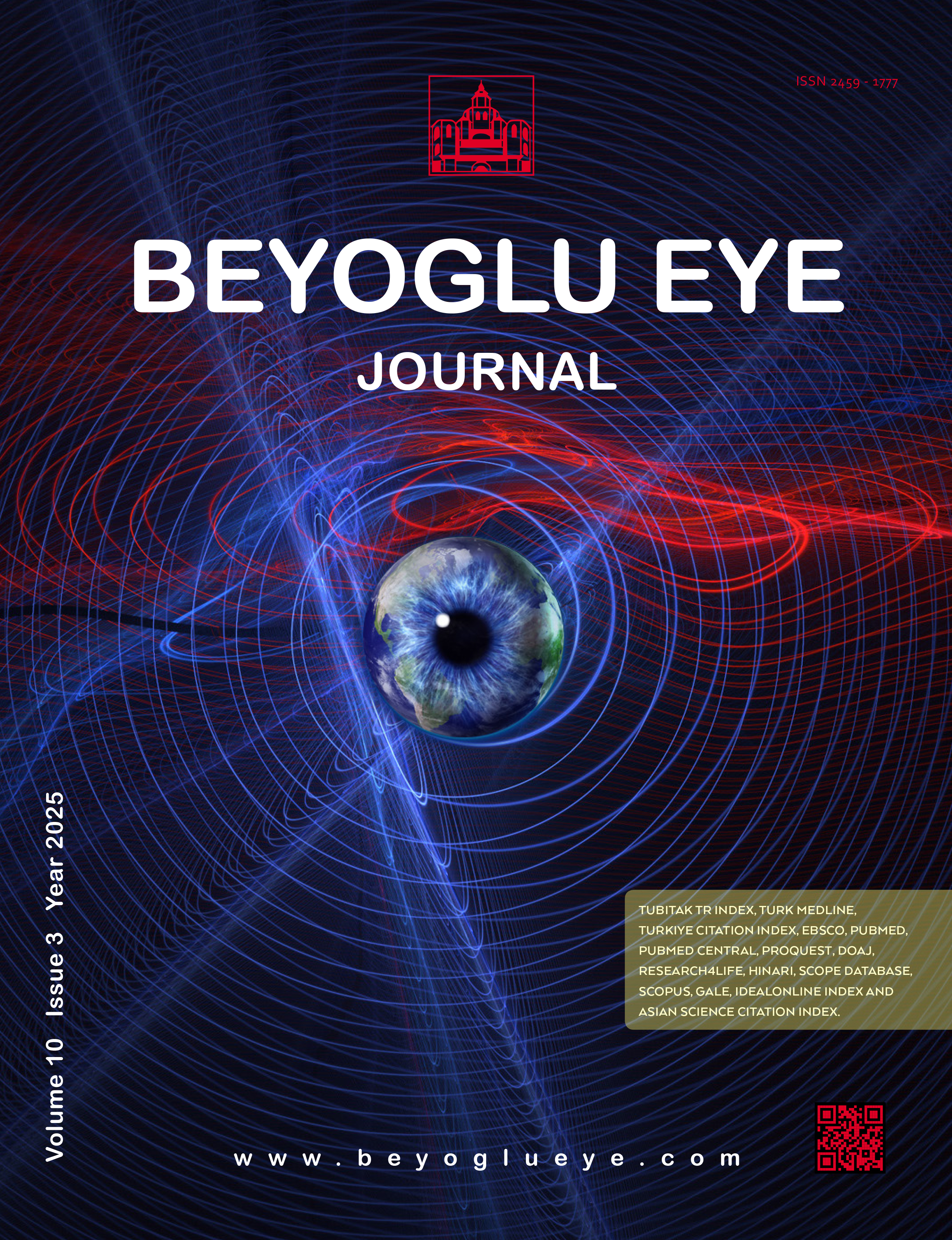
Exploring Health Tourism and Corneal Refractive Surgery: Insights From a Single Referral Center
Yusuf Berk Akbas1, Ahmet Alperen Koc21Department of Ophthalmology, University of Health Sciences, Basaksehir Cam and Sakura City Hospital, Istanbul, Türkiye2Department of Ophthalmology, Istanbul Aydin University, Medical Park Florya Hospital, Istanbul, Türkiye
OBJECTIVES: The purpose of this study was to compare the characteristics, clinical outcomes, and complications of health tourism patients who underwent corneal refractive surgery with the local patient group.
METHODS: This retrospective study analyzed the medical records of 736 health tourism patients and 853 local patients who presented for corneal refractive surgery. Patient demographics, type of laser procedure, visual and refractive out-comes, complications, and follow-up period were recorded.
RESULTS: The mean ages of health tourism patients and local patients were 27.1±5.9 and 26.3±5.3 (p=0.216), respec-tively. The percentage of patients who underwent surgery was significantly higher among health tourism patients (91.0%) compared to local patients (78.2%) (p<0.01). There were no significant differences in uncorrected distance visual acuity, corrected distance visual acuity, or spherical equivalent at the 3-month post-operative examination. The median follow-up period for health tourism patients was 1 (1360) day, while for local patients, it was 360 (301080) days (p<0.001). The percentage of patients who received laser-assisted in situ keratomileusis surgery was significantly higher in the health tourism group (89.9% vs. 82.0%, p<0.001). There were no significant differences in perioperative or early post-operative complications.
DISCUSSION AND CONCLUSION: Health tourism patients were more likely to have undergone surgery and had a significantly shorter follow-up period. This may particularly affect the follow-up of the long-term complications.
Manuscript Language: English









